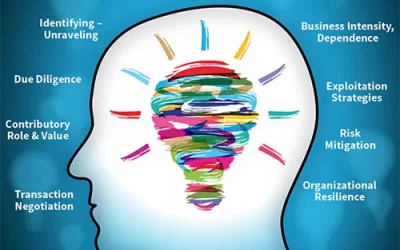Michael D. Moberly September 14, 2009
The question whether franchise operations are driven (more) by conventional intellectual property (IP) or by other intangible assets probably represents, for some anyway, a classic case of ‘a difference without a distinction’. The franchising business model is characterized as a service industry driven by licensing of patents, trademarks, service marks, copyrights, and trade secrets.
Its fair then to generalize franchisors’ as probably devoting more time addressing near term issues such as (a.) IP licensing, (b.) recruiting franchisees, (c.) collecting royalties and fees, and less time to (d.) identifying and exploiting intangible assets developed/produced by franchisees.
The broad question presented here is, could additional revenue, value, sustainability, and foundations for growth and expansion be realized if franchisors had objective processes in place to consistently identify, (collect) measure, monitor, manage, and exploit the additional intangible assets produced as a franchisee (and/or franchise operation) matures?
Intellectual property largely consists of precedent driven concepts, processes, and certifications which most franchisor management teams possess familiarity, or which they can readily turn to legal counsel to address. Intangible assets, on the other hand, lack comparable precedents or processes. In fact, intangible assets lack physicality which makes measuring their performance still somewhat elusive. Too, there’s seldom an ‘intangible asset specialist’ readily available for franchisors to turn for counsel.
The view put forth here is that franchisors and their franchise operations are less driven today by the intellectual property licensed to franchisees, and more driven by the intangible assets that franchisees develop. Franchise intangible assets are defined as unique blends (collections, combinations) of activities, and/or relationships that franchisees’ develop and execute to acquire sales, gain market share, and competitive advantages to differentiate themselves in the market place.



